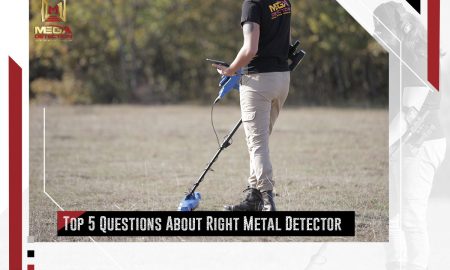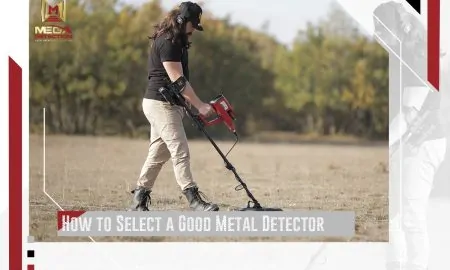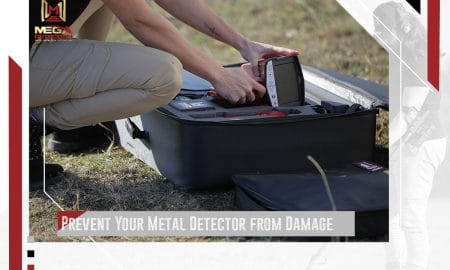How to Increase the Depth of a Metal Detector?
How to Increase the Depth of a Metal Detector?
How deep do metal detectors detect is a question that can be difficult to answer. The reason is that each device has a different level of depth. But one thing applicable for all metal detectors is increasing their detection depth.
To increase the depth of a metal detector, you can: sweep the coil close to the ground – increase the – sensitivity setting – reduce the discrimination setting – install fresh batteries – upgrade to larger coil.
How deep do metal detectors detect? The truth is that there is no exact number that can answer this question since these devices are so diverse and exist with many capabilities. So, there are no actual numbers that tell the depth level that a metal detector can reach.
Additionally, the size of the object to be found affects how deep metal detectors can detect. However, you can always increase the depth level of a metal detector.
Increasing the depth of your device will allow you to find old relics and objects that detectors are not too sensitive and often miss.
One of the most common and easiest ways to increase the depth of your metal detector is to sweep the search coil the closest to the ground possible. This tip may seem like an obvious thing to do. However, many metal detector users often lose sight of how high they are swinging their coils. The primary reason is that they pay more attention to how they swing the search coil.
But the problem is that if the search coil is too high from the ground you are searching objects from, the shallower its detection level will be. So, when using your device, you need to ensure that it is not too far from the ground.
The higher the sensitivity of your metal detector the more it can help you increase the device’s detection. But it is important to note that the increase in the depth level will depend on the various circumstances. These circumstances include the soil type, target type, and the object’s size.
However, a metal detector’s sensitivity is a double-edged sword. Yes, it will increase the depth level of your device. But increasing the sensitivity can also reduce your device’s ability to identify targets.
Most of the time, metal detectors give wrong readings to deeply buried and desirable objects. The culprit behind it is often your device’s discrimination setting that is set too high. A high discrimination setting affects how deep do metal detectors detect.
You can reduce the device’s discrimination level to the lowest setting that you can stand for a deeper detection level. Meaning you still should hear alerts for objects detected. Once you hear deep signals, you should examine them closely before you start digging. It would be best to watch out for a jump into the desirable range while swinging the coil.
With these steps, you will find deeply buried objects, not just nails buried close to the surface.
If your batteries are down just 10%, you could be losing inches of detecting depth , With batteries down 1 level on the indicator I’m losing close 2 inches or more depth penetration.
If your detector is capable of swapping out coils a bigger coil can increase depth. This does come with a trade-off. Your machine will lose some discrimination sensitivity. This may mean you dig deeper trash.
If you are still starting to learn how to use a metal detector, you may need a guide in terms of the range adjustment. Thanks to the continuous advancement of technology, new metal detectors already come with range adjustment settings. If you know how to set these adjustments correctly, you will experience smooth and hassle-free hunting.
How deep do metal detectors detect will depend on how you adjust the settings. For this reason, it is essential that you have enough knowledge when it comes to this area.
The stock settings are likely one of the aspects of metal detecting that people often overlook. But if you are a beginner in metal detecting, the stock “turn on and go” settings can be an excellent place to start. This aspect is often set at a power of 60 to 70 percent. With such a setting so high, your metal detector will be able to discriminate out iron, foil, and other undesirable objects.
Many users turn their stock settings high and use the full power of their metal detectors to find out how deep do metal detectors detect. While that seems a good idea, using the maximum sensitivity of your device cam chatter from electromagnetic interference. Such is especially true if you live in areas with multiple cellular and wifi signals and substantial power lines.
That said, less is more in your detector’s stock settings if you are a beginner. Ideally, you only need to adjust the stock set to 7 of 10 (70 of 100).
Not all metal detectors have a ground balancing setting. If you own a beginner detector, it may only allow you to use a factory preset ground balance.
But if you plan to go for an intermediate or advanced metal detector, you should never overlook the ground balance setting. Incorrectly set ground balance can lead to false signals and reduce how deep metal detectors detect.
The frequency is one of the factors that tell how deep do metal detectors can detect. Similarly, it is the aspect that tells how well the device can detect targets.
If you have a single-frequency metal detector, it will transmit high-frequency signals. Such a type of metal detector is ideal for finding small targets.
On the other hand, a single-frequency metal detector that can transmit low frequencies will provide more depth in detecting large targets.
Furthermore, there are also detectors equipped with Pulse Induction (PI). This device has more coils than single-frequency detectors. For this reason, it can send bursts of electromagnetic waves that bounce back as they hit a target. However, you cannot tell the difference between those targets that the PI detects.
As mentioned, the higher the discrimination level of a detector is, the lesser trashy signals you will detect. But apart from this option, many metal detectors have a second way of doing that — the notch setting.
A notch setting is one way of removing a category from the detector’s adjustment range.
When you utilize the discrimination setting, you have to go from left to right to eliminate trashy signals one after another. But with the notch setting, you can bypass several categories. Meaning you can select what stays in and what goes out.
For instance, you can remove various categories, such as foils, and pull tabs while leaving in the 5c category. Such is an excellent option for people who use their metal detectors to detect coins and want to leave the 5c while removing the other types such as iron and 10c.












Leave a Reply